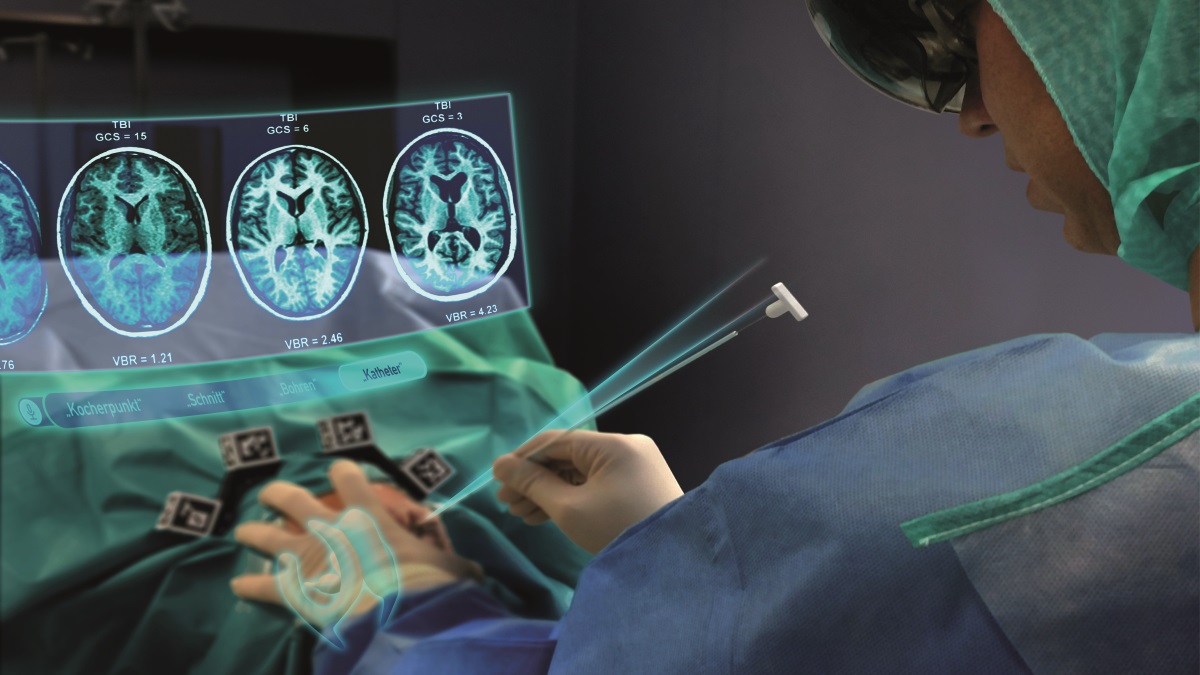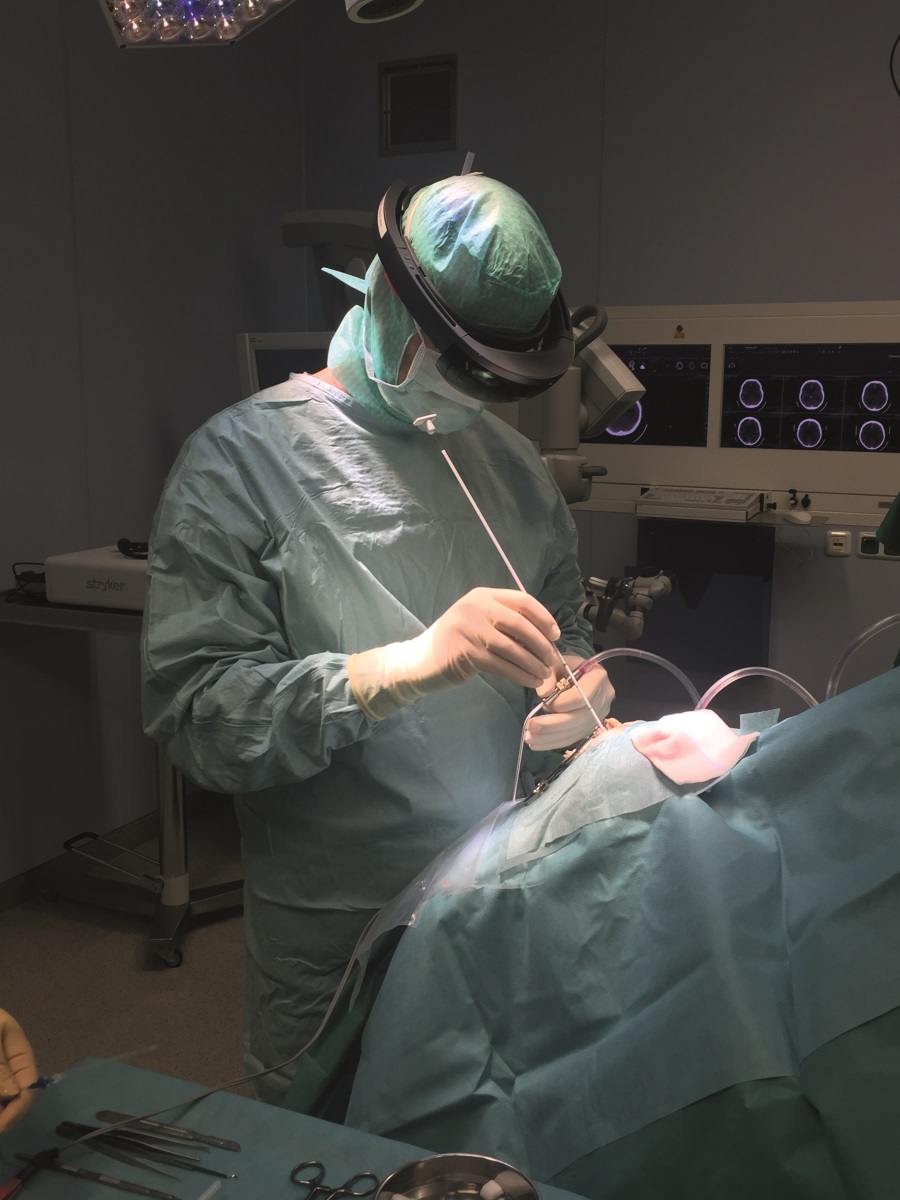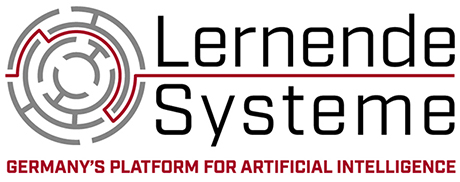HoloMed - Precise puncturing for brain surgery
Brain surgery after a cerebral hemorrhage or stroke is one of the most demanding and difficult tasks in modern medicine. Precise manual dexterity is required of neurosurgical personnel, and every minute counts. With HoloMed, scientists from the Institute of Anthropomatics and Robotics at the Karlsruhe Institute of Technology (KIT) have developed an award-winning system to support physicians during brain operations with artificial intelligence.

Small cavities called ventricles lie hidden inside our brain. They are filled with cerebrospinal fluid and ensure constant pressure equalization. When the brain is damaged, excess pressure can build up in one of the ventricles - the pressure balance then no longer functions. Neurosurgeons must then manage to drain cerebrospinal fluid from the damaged ventricle in the shortest possible time.
High error rate in brain punctures
The operation they perform is called ventricular puncture. During this procedure, a tiny hole is drilled into the top of the skull. The surgical team then inserts a catheter into the corresponding brain chamber. This is used to try to reduce the pressure inside the brain as quickly as possible and remove accumulated fluid. Until now, physicians have had to use their bare fingers to feel for the correct drilling site. The error rate is high: the optimal position of the catheter is reached in only two out of three cases - and sometimes only after many failed attempts.
In order to increase the hit rate on the first try, operating room personnel should be able to count on the support of artificial intelligence in the future. In the HoloMed project, which is funded by the German Federal Ministry of Education and Research (BMBF), the project partners around the Institute of Anthropomatics and Robotics at KIT are developing the software for augmented reality glasses. It shows surgeons the way to the hidden brain chambers.
Artificial Intelligence guides the surgical team

HoloMed creates a 3D model of the brain from computer tomography images of the patient. Structures deep inside the brain that are invisible to the eye are thus prepared for the attending physicians. Augmented reality glasses help them determine the puncture point and angle of the puncture needle. By superimposing the information relevant to the operation into the medical team's field of vision, surgeons can determine with spatial accuracy how best to guide the needle.
"The HoloMed glasses are a flexible, mobile and cost-effective solution that allows us to significantly increase the quality of such interventions," explains Ulm neurosurgeon Michael Hlaváč. And what's more: "The technology is transferable to many other operations." In addition, it could conceivably be used in medical training. In the future, assistant doctors could learn to save lives virtually before they dare to perform real operations. HoloMed was awarded the 20,000 euro NEO2019 Innovation Prize.
Application facts
Human-Computer Interaction and Assistance Systems
Virtual and Augmented Reality
- Intelligent Assistance Systems
Karlsruher Institut für Technologie (KIT)
University/Research Institution
Website
User Interface Design GmbH
mbits imaging GmbH
Universität Ulm
